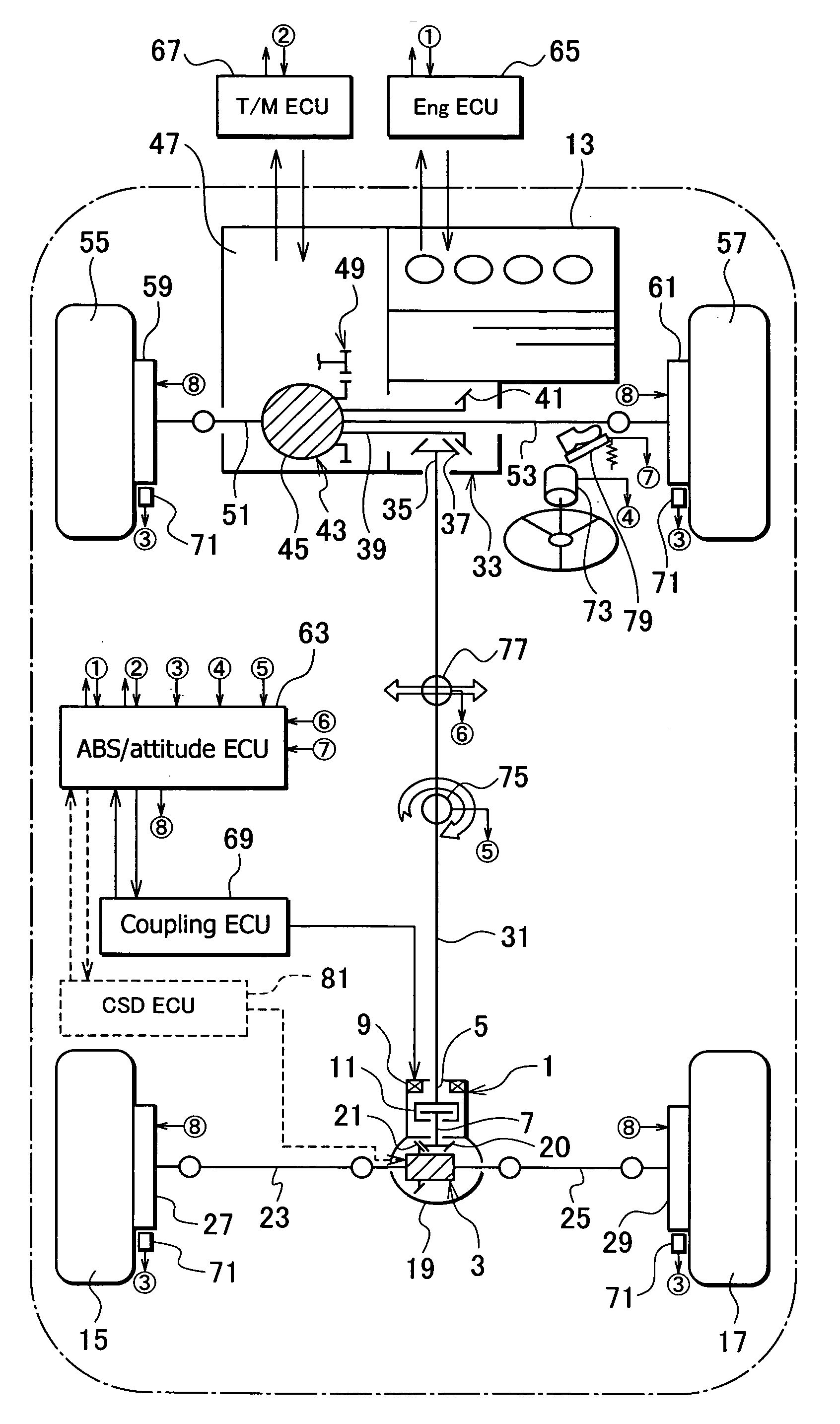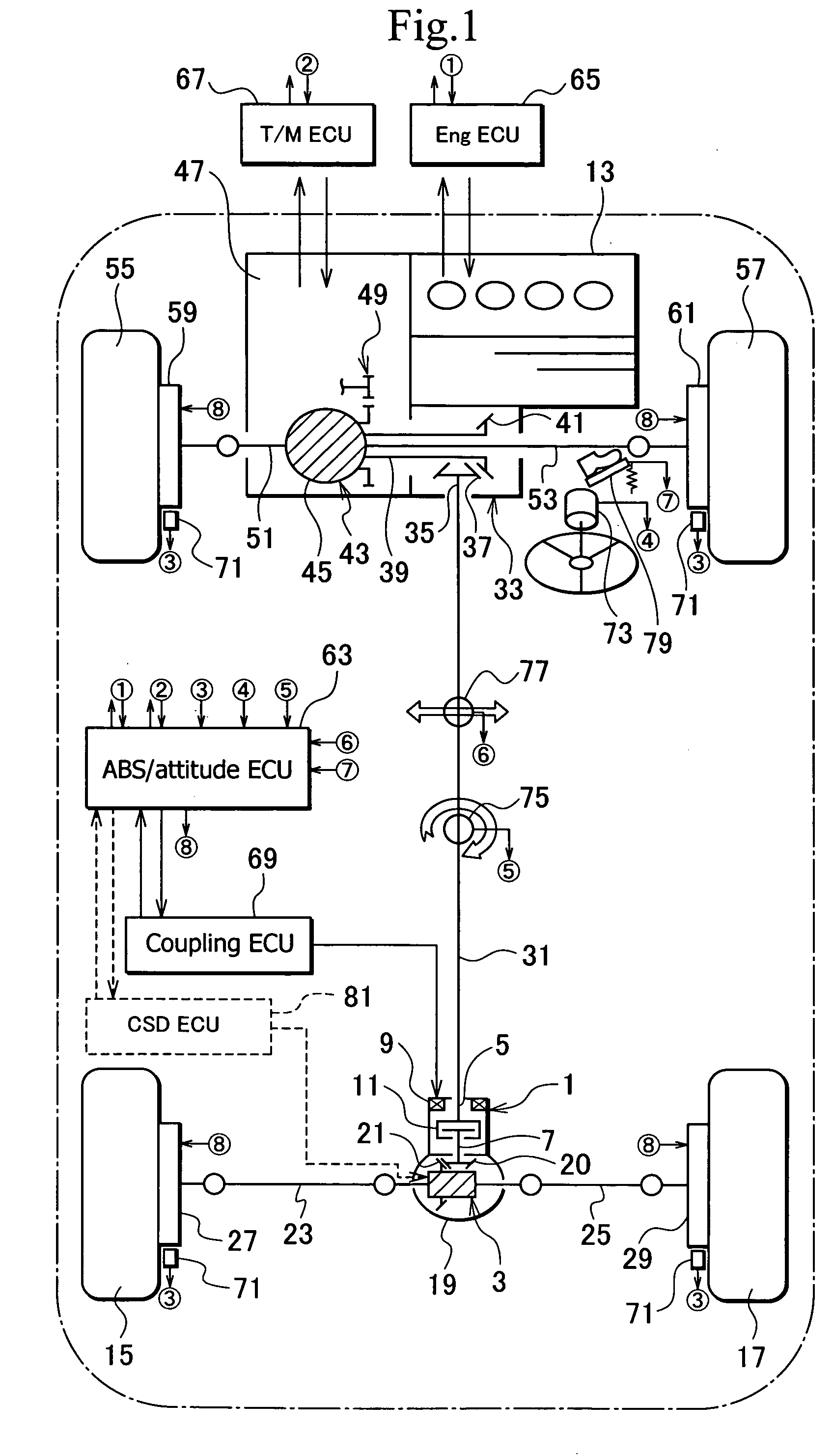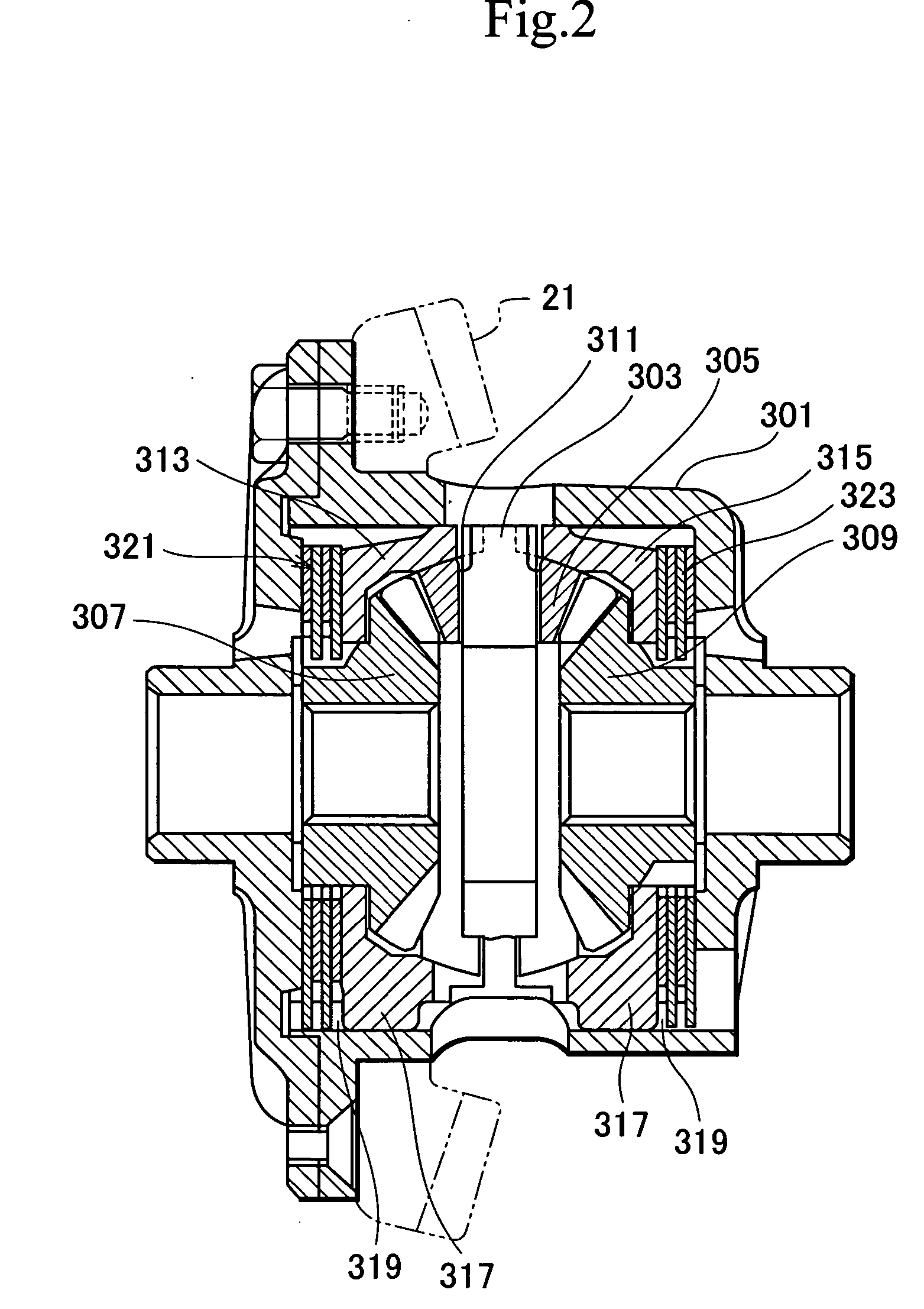Apparatus for controlling driving force of vehicle
- Summary
- Abstract
- Description
- Claims
- Application Information
AI Technical Summary
Benefits of technology
Problems solved by technology
Method used
Image
Examples
first embodiment
[0027] [Four-Wheel-Drive Vehicle]
[0028]FIG. 1 is a plan view generally showing a four-wheel-drive vehicle having a driving force control apparatus according to the first embodiment of the present invention. This vehicle is a front-engine, front-drive vehicle, i.e., an FF vehicle.
[0029] In FIG. 1, a torque transmission coupling 1 serving as a torque connection / disconnection mechanism is arranged on the input side of a rear differential 3. The torque transmission coupling 1 is placed between a rotary shaft 5 and a drive pinion shaft 7, to operate the vehicle as an on-demand-type four-wheel-drive vehicle.
[0030] The torque transmission coupling 1 is of an active type and has an electromagnet 9 serving as an actuator. With magnetic force of the electromagnet 9, the torque transmission coupling 1 controls engaging force on a multiplate clutch 11, to thereby control torque transmission from the rotary shaft 5 to the drive pinion shaft 7. The multiplate clutch 11 includes, for example, a ...
second embodiment
[0100]FIG. 15 is a plan view generally showing a four-wheel-drive vehicle having a driving force control apparatus according to a second embodiment of the present invention. In FIG. 15, the same or corresponding parts as those of FIG. 1 are represented with the same reference numerals or the same reference numerals plus “A.”
[0101] The four-wheel-drive vehicle of FIG. 15 is a longitudinal front-engine, rear-drive (FR) vehicle. According to the second embodiment, a front wheel side serves as a secondary drive side, and therefore, a torque transmission coupling 1A is provided for a front differential 43A. The torque transmission coupling 1A is engaged with a drive pinion shaft 83 having a drive pinion gear 85. The drive pinion gear 85 meshes with a ring gear 87 of the front differential 43A, to form a final reduction mechanism. The front differential 43A on the secondary drive side and a rear differential 3 on a primary drive side each have a passive-type differential limiting mechanis...
third embodiment
[0113]FIG. 16 is a plan view generally showing a four-wheel-drive vehicle having a driving force control apparatus according to a third embodiment of the present invention. In FIG. 16, the same or corresponding parts as those of FIG. 1 are represented with the same reference numerals or the same reference numerals plus “B.”
[0114] The four-wheel-drive vehicle of FIG. 16 is a lateral front-engine, front-drive (FF) vehicle. The driving of the rear wheels is electrically assisted. A primary drive side is a front wheel side and a secondary drive side is a rear wheel side.
[0115] On the primary drive side (first drive side), torque of an engine (first drive source) 13 is transmitted through a main clutch 103 and a CVT (continuously variable transmission) 105 to a front differential 43.
[0116] On the secondary drive side (second drive side), torque of an electric motor (second drive source) 107 is transmitted through a reduction gear 109 and a torque connect / disconnect unit 111 to a rear d...
PUM
 Login to View More
Login to View More Abstract
Description
Claims
Application Information
 Login to View More
Login to View More - R&D
- Intellectual Property
- Life Sciences
- Materials
- Tech Scout
- Unparalleled Data Quality
- Higher Quality Content
- 60% Fewer Hallucinations
Browse by: Latest US Patents, China's latest patents, Technical Efficacy Thesaurus, Application Domain, Technology Topic, Popular Technical Reports.
© 2025 PatSnap. All rights reserved.Legal|Privacy policy|Modern Slavery Act Transparency Statement|Sitemap|About US| Contact US: help@patsnap.com



